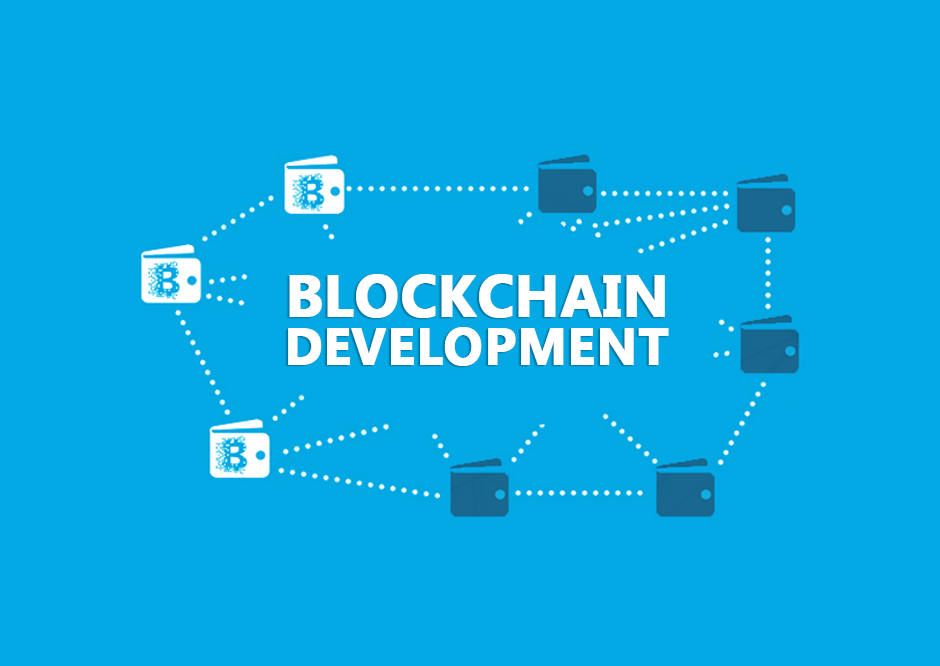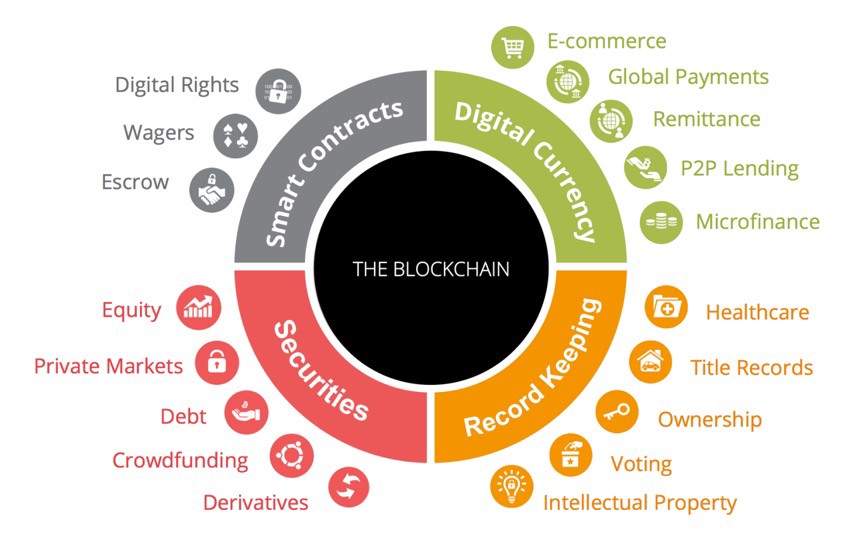What Is Blockchain Development?

Global digitization has touched each component of modern marketing. Cryptocurrencies had incredibly increased in quality and quantitatively – the influence of digital marketing on the world’s financial condition became extremely important. A new way of transactional information storage became the most essential part of blockchain technology. What is the objective profit of such an innovation and how to use blockchain in getting new cryptocurrencies?
The Innovative Data Distribution Method
Such a system’s work is based on both simple and complicated principles. While the development of the secure and reliable data distribution method, essential programming aspects were considered to make block chain acquire modern confirmation algorithms.
The concept of blockchain is based on permanent information recording. The constant consistency of the blocks determines the data, which each of them will contain if any new operation occurs. Its main quality is that each is unique – it is impossible to replicate the same structure after new data appears in the system. Blockchain technology companies use this property for fully secure product development.
Practical Efficiency
Block chain meaning in the digital promotion of modern business is constantly growing. Each new business model or project requires highly reliable security options, which are fully maintained by the users. The main quality of an algorithm – it can be used practically at every field, operational information of which is desired to be safe. It is acquired by the next important properties of a blockchain:
- Infinite unique block creation: the customers become confident in transaction’s reliability – a necessity in third parties’ involvement disappears.
- Constant rules, set at the beginning: the primary developers determine how blockchain works and even if any changes should be implemented during the system’s first maintenance operations.
- Full-participant confirmation: if blockchain is used in the financial operations, the transaction verification is done only when all participants of the deal confirm it.
- Smart-contract principle: it became unnecessary to check the similarity of the transfer notations – the confirmed users can see any data, which belongs to the implemented operation.
- The immutability of the subsequent blocks: to allow full dependence of each new block on the previous ones, the data and the blockchain’s structure can’t be changed.
Blockchain Structure
Even if the concept’s benefits and main aims are understood, it is always necessary to know what is blockchain technology’s structure basis, and why it is considered so important in keeping information safe. Each block is presented by the essential components, responsible for making its architecture unique and unchangeable:
- Address – the public parameter, which is first generated by the specific cryptography algorithms, based on the primary, created by the user or a programmer.
- Date and time – essential indicators, which show when the block was created after new transactional information appeared in the system.
- Hash function – it is counted from the address of the previous block and the sum of the previous blocks; transaction hash.
- Information – the cells can contain information, set as the main parameter at the development stage.
The blockchain definition means that such structural elements are combined to create an endless chain of newly created blocks. Modern algorithms make them unapproachable for changes – only a general review of a specific cell component can be done.
Digital Signature
Each transaction or any new data appearance, accompanied by the new blocks’ creation, needs to be confirmed with a specific signature type. It is a signature, which is formed by the sequence of bytes, signed with the use of special cryptographic algorithms. Blockchain use cases showed that such confirmation is one of the most reliable ones – the digital signature can’t be changed and stays untouchable even if the new informational blocks appear.
Such a signature type is determined by the several essential methods (the basis of the system’s high reliability):
- Symmetric encryption: it makes the encryption and decryption keys the same.
- Asymmetric encryption: the use of two different keys is implemented in such a case (the one, used for encryption is named “public key”, for decryption – “private key”.
Speaking about the signature, it is done with the private key in the asymmetric algorithms, the signature’s confirmation – with the public one. The asymmetric encryption is more popularized in the real estate blockchains – it allows seeing if a true block holder implemented some changes and confirmed it with the signature.
Public And Private Keys
- The private key is created by the user and is usually kept in secret – everyone who has it can get access to each blockchain cell, determined by the unique algorithms and specific primary properties.
- The public key is generated with the help of the private one’s basis (however, even if it is known, the private key can not be revealed). It is used as a block’s address and helps to confirm the signature’s authenticity.
The Confirmation Algorithm
Blockchain startups should be elaborated with an involved approach to guarantee data safety and confirm true user’s access to the informational cells. To create a verified signature, an innovative algorithm, which includes the specific and non-recurring elements, is required:
- Asymmetric encryption.
- Hash function.
- The information, which needs to be signed.
Due to the asymmetric encryption’s low speed, compared with the symmetric one, the data volume plays a key role. Hash is obtained with the help of hash functions, which process the incoming information and return a certain hash. All in all, the step-by-step confirmation process is determined by the next stages:
- With the use of an encryption algorithm, the public and private keys are generated;
- The information, which is necessary to be signed is put into the hash function;
- The obtained hash and private key are put to the encryption function – eventually, a digital signature is created.
The Client’s Main Purpose
At the final stages of blockchain creation, the programming instruments, in which the huge cells sequence will be kept safe – with each addition of the new block, a file should be updated. The customer should be aimed at the main authorization and review processes:
- User check in – the new blockchain cells are created;
- Authorization – the address of the block is used as a login, the password is a private key;
- Transactional information introducing – arbitrary information is set into the blocks, which become available for review.
Blockchain Network Types
They are divided into specific types due to the main algorithms, which became a basis of blockchain applications or other product types:
- Public networks: they are fully available for users and have increased requirements for the counting output, compared to the other types. Despite the low level of transactions confidentiality, such a network is popular in the corporate fields.
- Private networks: the decentralized networks are maintained by a certain organization, which is capable of participants’ control and the general registry support. Such an approach can improve the blockchains’ reliability and credibility.
- Exclusive networks: only limited users can get access to the exclusive networks – the ones who can participate in the separate transactions (the participants need getting connection access)
- Blockchain consortium: it is implemented in the companies, where blockchain management is available for many participants – they all are responsible for blockchain proper workability and have equal rights for making transactions.
Fields Of Blockchain Use

Following the above, blockchain can be used in any marketing or social field. Applications of blockchain have different peculiarities and are aimed at various beneficial implementations:
- Logistics management – the local marketing analytics, or products’ tradeability information can be easily kept safe with blockchain.
- Retail software – strategic plan, the information about current marketing conditions or its analytical data are logically distributed.
- Blockchain real estate – the smart contracts help to prepare necessary buying and renting contracts, the data about the real estate’s general assessment.
- Cryptocurrencies – the latest algorithms of transaction verification are implemented to make digital transfers highly reliable.
- Healthcare blockchain – patient management information is included in a long sequence of informational cells.
Blockchain In Healthcare
Considering the importance of proper healthcare management, blockchain may become a good solution for such an implementation field. Blockchain and healthcare have complementary concepts, which make information about certain processes easy to review and keep safe:
- The current patient’s status review.
- Remote patient’s control.
- Medical investigations.
- Analysis of specific medical data.
- The donor material distribution.
Nowadays blockchain healthcare is one of the most essential algorithms, wide implementation of which may create a comfortable model of the relationships between a doctor and a patient. The described scripts of blockchain use can make the healthcare management processes easy and efficient – proper medical care becomes available.
Conclusion
All in all, blockchain is a unique digital algorithm, which allows keeping all the needed information safe – only several verification processes can give a certain block’s access to the new users. Blockchain is widely implemented nowadays, which can be seen in several popularized products. If you want to fill your activity with innovative confirmation methods and make logical data distribution, which simplifies the check-in and info review, find out what is blockchain and what benefit it can bring to your projects or business model.
